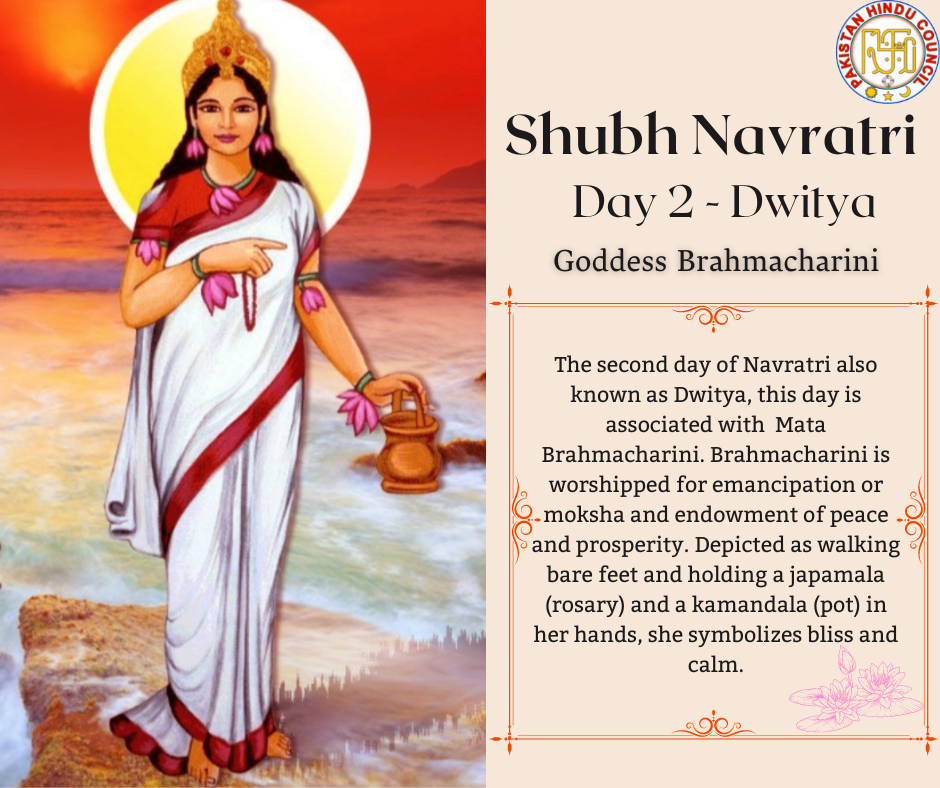NAVRATRI DAY 2
𝗡𝗔𝗩𝗥𝗔𝗧𝗥𝗜 𝗗𝗔𝗬 𝟮: 𝗕𝗥𝗔𝗛𝗠𝗔𝗖𝗛𝗔𝗥𝗜𝗡𝗜
The second day of 𝗡𝗮𝘃𝗿𝗮𝘁𝗿𝗶 also known as 𝐃𝐰𝐢𝐭𝐲𝐚, this day is associated with 𝗠𝗮𝘁𝗮 𝗕𝗿𝗮𝗵𝗺𝗮𝗰𝗵𝗮𝗿𝗶𝗻𝗶.
Brahmacharini is worshipped for emancipation or moksha and endowment of peace and prosperity. Depicted as walking bare feet and holding a japamala (rosary) and a kamandala (pot) in her hands, she symbolizes bliss and calm. She is worshipped on the second day of Navratri. Brahmacharini is the Goddess who performed ‘Tapa’ meaning penance. Brahma-Tapa, Charini-Performer.
She personifies love and loyalty. She is also called as ‘Uma’ and ‘Tapacharini’ and provides 𝙠𝙣𝙤𝙬𝙡𝙚𝙙𝙜𝙚 and 𝙬𝙞𝙨𝙙𝙤𝙢 to her devotees.
𝗠𝗮𝗻𝘁𝗿𝗮 𝗼𝗳 𝗕𝗿𝗮𝗵𝗺𝗮𝗰𝗵𝗮𝗿𝗶𝗻𝗶 :
ॐ देवी ब्रह्मचारिण्यै नम:
𝗢ṃ 𝗗𝗲𝘃ī 𝗕𝗿𝗮𝗵𝗺𝗮𝗰ā𝗿𝗶ṇ𝘆𝗮𝗶 𝗡𝗮𝗺𝗮ḥ

